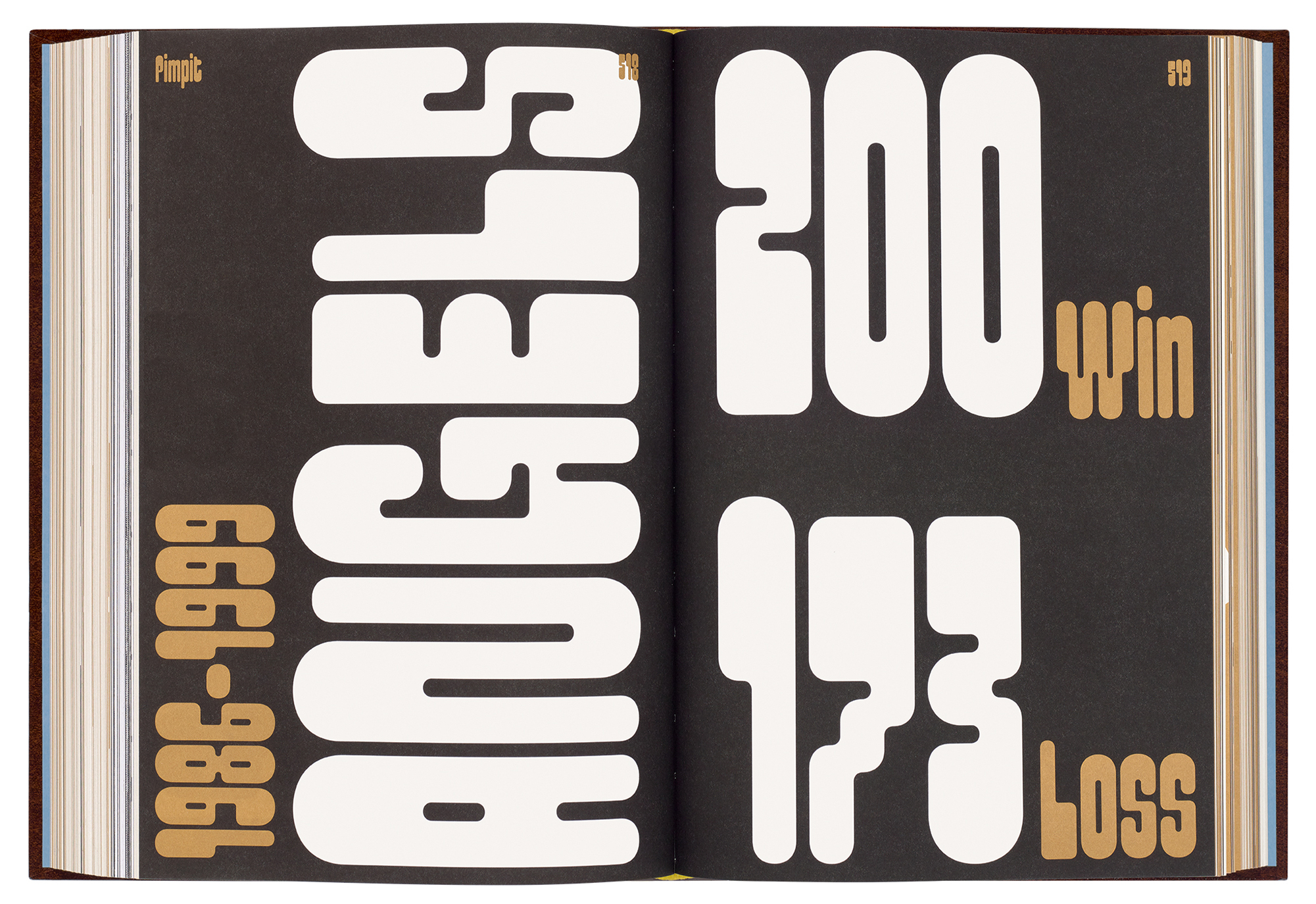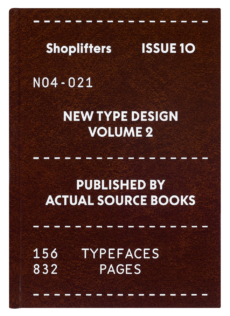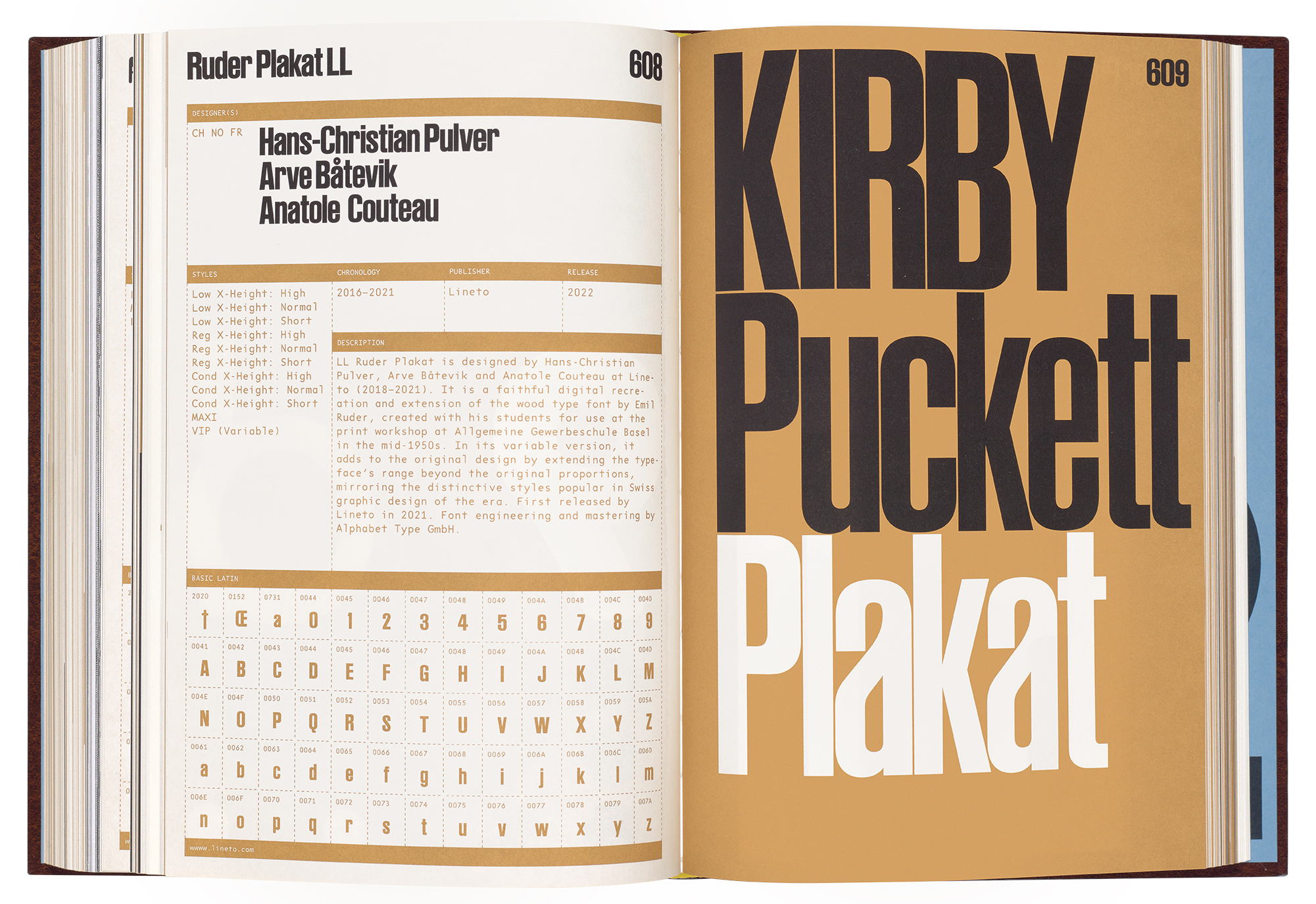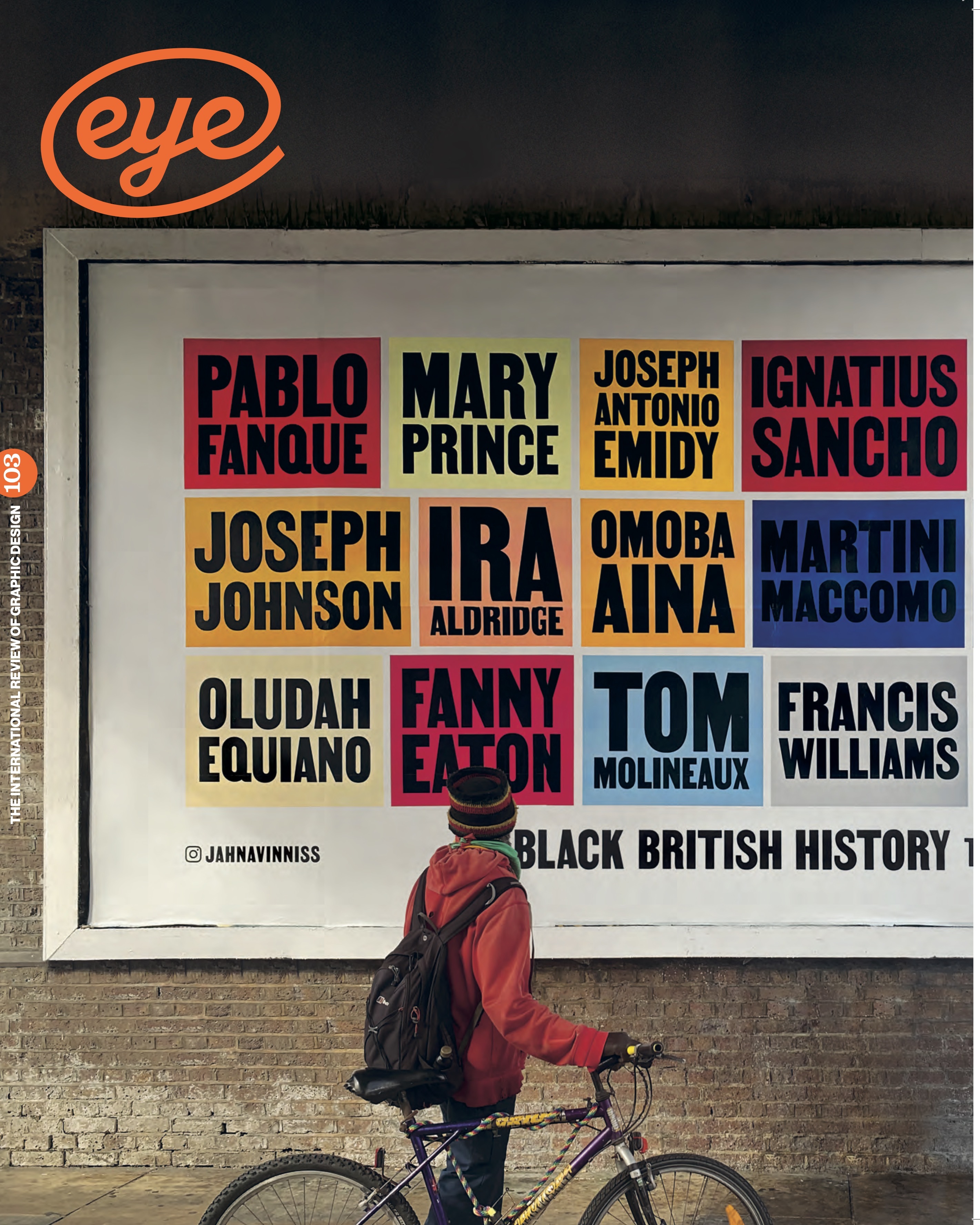Summer 2022
Type’s new faces
Benoît Bodhuin
Kris Sowersby
Hans-Christian Pulver
Arve Båtevik
Anatole Couteau
Reviews
Typography
Shoplifters 10: New Type Design Volume 2
Designed by Actual Source. Actual Source Books, hardback, $59, £45
Weighing in at a little under two kilos and running to a whopping 832 pages, Shoplifters 10 is a visual feast for people who love type, featuring 156 typefaces produced in the past three years by more than 100 designers. Shoplifters is a bi-annual periodical from Actual Source, an independent studio and publisher from Utah, US, whose mission is to publish contemporary work from a wide range of creative disciplines.
Each Shoplifters edition focuses on an individual area and is designed uniquely in a hardback format that aligns with the editorial direction of the issue. Shoplifters 10 is Actual Source’s second edition devoted to type, following on from issue 8, for which the introduction was contributed by Kris Sowersby (see Eye 79) of Klim Type Foundry. Addressing the challenges that confront type designers in making successful typefaces for today’s burgeoning but crowded market, Sowersby wrote: ‘Producing a new typeface today is almost trivial … But making it feel new in the wider sense, making it feel culturally relevant is the hard part.’
Cover of Shoplifters 10: New Type Design Volume 2. Top. Spread featuring Pimpit by Benoît Bodhuin, published by BB Bureau.

One might therefore anticipate that the purpose of such a hefty and expansive volume as Shoplifters 10 would be to demonstrate the cultural relevance of type design today by attempting to survey its current disposition. However, that does not appear to be Actual Source’s intention. Rather, the publication seems to support the facetious suggestion, as posted recently by some wag on social media, that ‘curating is just choosing things’. No explanation is provided in Shoplifters 10 for the choice of the items included; nor are the submission process and selection method revealed.
Examination of the editorial structure yields little further information beyond the appearance of the typefaces themselves: all 156 are presented in alphabetical order, each accompanied by a list of styles and other tabular data, followed by a few well designed spreads showing applied examples. All of the typefaces shown are new and most are commercially available for use, while others are work-in-progress or remain unpublished. Some typefaces are helpfully contextualised by means of short descriptions, probably provided by their designers, others are not. In addition to four long magazine-style features, printed on gloss paper, the publication also includes an extensive character overview – of no practical value whatsoever – and a cross-referable index.
LL Ruder Plakat, by Hans-Christian Pulver, Arve Båtevik and Anatole Couteau at Lineto, is a digital recreation of wood type designed by Emil Ruder in the 1950s.

There is much to admire in Shoplifters 10. It is an immaculately designed publication brimming with exciting new typefaces, but it remains a partial, preferential snapshot of a much richer and more diverse international scene.
The editors show a distinct leaning towards European work, and a handful of respected boutique digital foundries, including Lineto, Dinamo and Commercial Type, are featured in considerable detail. Seminal designs by innovators such as Sowersby (Epicene, Mānuka, Signifier) and Benoît Bodhuin (Gikit, Grotesk Remix, Pimpit) are represented well among a mixed bag of contributions from lesser-known designers.
In an extensive publication that has evidently had so much care and attention invested in it, it is a pity that more examples of engaging, purposeful work – from any number of other independent foundries and individuals working today – have not been included.
Paul McNeil graphic designer, educator, MuirMcNeil, London
First published in Eye no. 103 vol. 26, 2022
Eye is the world’s most beautiful and collectable graphic design journal, published for professional designers, students and anyone interested in critical, informed writing about graphic design and visual culture. It is available from all good design bookshops and online at the Eye shop, where you can buy subscriptions and single issues.

